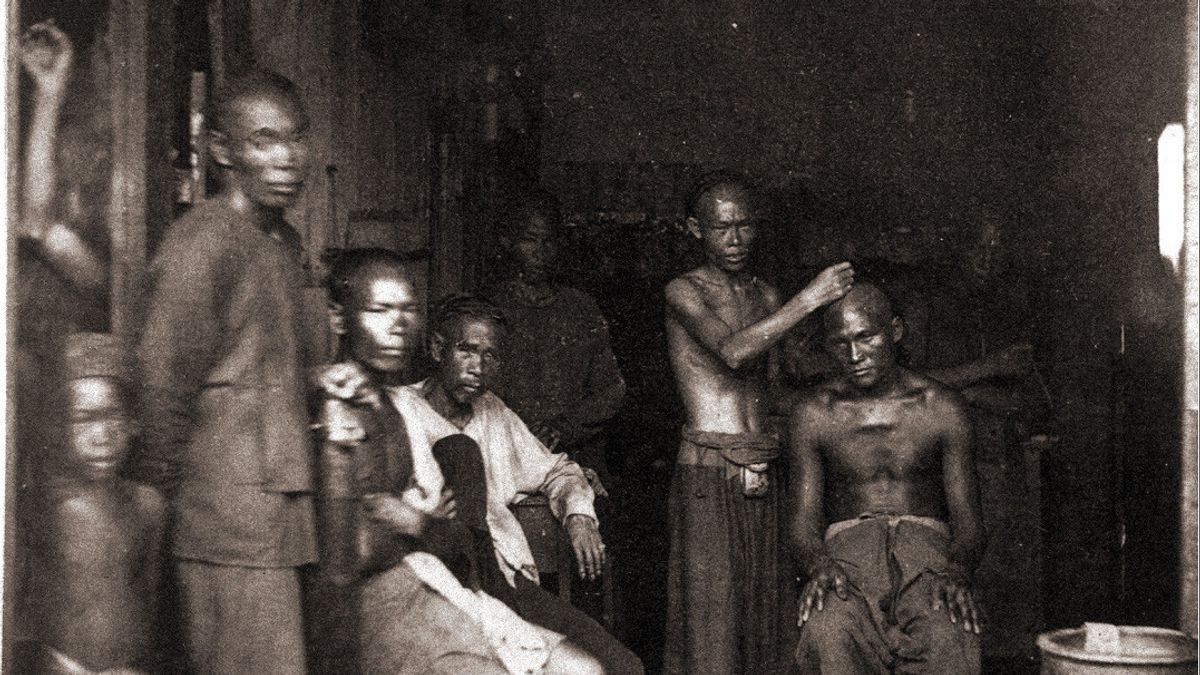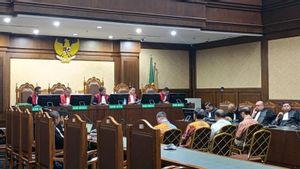JAKARTA - The story "Geger Pacinan 1740: Flood of Chinese Blood in Batavia" cannot be separated from the historical traces of the capital city of Indonesia. During its development, the city of Batavia, which was nicknamed the Queen of the East, was a witness to the discriminatory Dutch atrocities against Chinese. Rebellion broke out. However, the Company was reluctant to surrender. Instead, they launched a counterattack that cost more than ten thousand Chinese people their lives.
The genocide-like tragedy originated from the Dutch trading partnership, the VOC, which was unable to compete with the British trade partnership, the East India Company (EIC). This then resulted in a crisis in the Chinese sugar plantations in Batavia. The Netherlands took immediate action to limit sugar production. As a result, the unemployment of Chinese citizens has increased.
At the initiation of the then Indies Council, Gustaaf Willem Baron van Imhoff, the company then tried to deport the Chinese to Sri Lankan plantations for security reasons. The move was then greeted with rumors that the unemployed were deliberately sent to be killed in the middle of the ocean by drowning.
Hearing this, the Chinese immediately retreated into the forest, gathered strength, then persistently stirred up a rebellion against the Dutch. The rebellion made the Company furious. On October 9, 1740, at 11.00, the Dutch brutally crushed all Chinese in Batavia. Regardless of age and gender, all were slaughtered. In fact, many children were slaughtered.

The Selompret Melajoe newspaper, in an article entitled Boenoe di Taon 1740, described how the abominations of the Company had crossed its most brutal limits. "Young and old, women, children can not be forgiven. So in an instant the water was full of blood. Then three days, the Chinese people in Betawi have been killed, eight days from 11 to 19 October their corpses were thrown in the CIliwung River, some of which were eaten by crocodiles and then drifted into the sea, ”written in the November 2, 1992 edition.
Of the many involved in the massacre, one name emerged as the one most responsible. He was the Governor General of the VOC Adriaan Valckenier. He who reigned from 1737–1741 gave his blessing for the massacre.
Who is Adriaan ValckenierAdriaan Valckenier was born in Amsterdam, The Netherlands on 6 June 1695. Adriaan was born into a family of officials. Adriaan's father worked as a member of the City Council as well as a VOC official in the Netherlands. So, after being tired of starting a career in his hometown, Adriaan looked for new challenges by settling in the Indies (Indonesia).
He immediately realized this when he first set foot in Batavia on June 21, 1715. Thanks to the relationship of his parents, Adriaan worked and served for the VOC in Batavia. As many high-ranking officials in the Netherlands had predicted, Adriaan's career in the Indies went smoothly. Apart from the strength of the relationship, Adriaan also has a special intelligence.

In 1739, Adriaan was appointed a member of the Indian Council or what was known as the Extraordinary VOC parliament. Adriaan was so skilled at playing the political machine that within three years he had become a full board member.
His career continued to climb, until at the age of 41, Adriaan joined the advisory team to the then VOC Governor General, Abraham Patras (1735-1737). His path to become an advisor paved the way for Adriaan to reach a higher position.
On May 3, 1737, the old Abraham Patras died. This momentum was utilized maximally by Adriaan to move up to become the 25th Governor General of the VOC. Adriaan also became the supreme ruler in the Indies.
A reckless figureAdriaan's political prowess is somehow left behind. In the position of governor general, Adriaan even stuttered. When the rebellion broke out, Adriaan was full of doubts. He lacks assertiveness. His arguments and decisions were always crude in the presence of Hindu Council members. Adriaan was attacked. He is considered reckless and reckless.
Quoted from the Chinese book in Batavia and Huru Hara 1740 (2010), written by Johannes Theodorus Vermeulen. Several indications were explained that Adriaan was unable to control the Batavian citizens at the time of the massacre.
"This was seen in the actions of the guards moving into the city without orders, the cavalry who appeared to be rebelling under Weerman's leadership and the futile attempts to stop the vandalism and robbery," Vermeulen said.
In other allegations, it is said that Adriaan was consciously and firmly considered to support the massacre. In that case, Adriaan was accused of proposing cleaning up all Chinese citizens and ransacking their homes. Adriaan joked that all the residents in the city were conspiring with the rebels.
In fact, the massacre that occurred in the city of Batavia actually claimed victims from Chinese citizens who had nothing to do with the rebels. "This happened due to the weakness of the government. This weakness occurs as a result of internal divisions. A government that is hesitant and less careful and unable to provide direction in this dire situation. "
In the end, at a session of the Indies Council, a motion of no confidence was submitted to Adriaan on October 16, 1740. He immediately resigned and planned to return to the Netherlands. However, due to illness, Adriaan came down to Cape Town, South Africa to rest until he recovered to continue his journey to the Netherlands.
Meanwhile, Gustaaf Willem Baron van Imhoff returned to the Netherlands to face the legal charges brought against him by Adriaan. As revealed by Benny G. Setiono in the book Tionghoa Dalam Pusaran Politik (2003), the results of the trial are the opposite. Heeren XVII - the VOC owner - also considers Adriaan's eternal enemy, Van Imhoof as the new VOC Governor General to replace himself.
“The trial also sent an order to Cape Town to immediately arrest the former Governor-General Adriaan Valckeiner to be returned to Batavia for examination and put in the same prison, where he held the Kapitan China, Ni Hoe Kong on the Robin's stronghold in Batavia fort (1742-1751) , "Said Benny.
Nevertheless, the investigation regarding Adriaan was convoluted and prolonged, in fact, it almost reached the figure of 10 years. Adriaan has also submitted a defense document that is so thick that no one has been able to study it. "Finally, on June 20, 1751, Adriaan died and his examination was suspended."
The English, Chinese, Japanese, Arabic, and French versions are automatically generated by the AI. So there may still be inaccuracies in translating, please always see Indonesian as our main language. (system supported by DigitalSiber.id)









